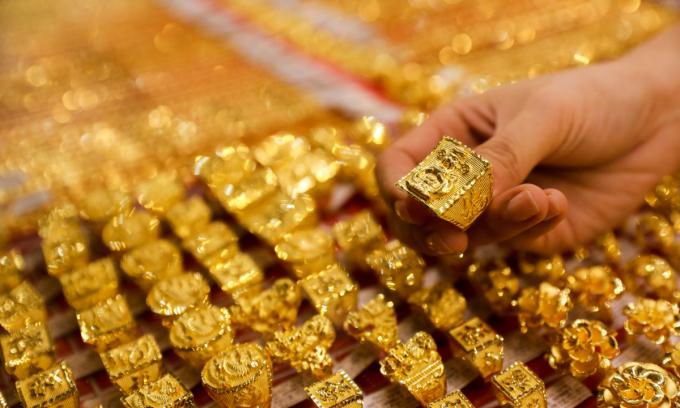The US Dollar (USD) was flat but set for a fifth consecutive week of gains in its longest winning streak for 15 months


The US Dollar (USD) was flat on Friday but set for a fifth consecutive week of gains in its longest winning streak for 15 months, buoyed by demand for safer assets on worries over China’s economy and bets that U.S. interest rates will stay high.
The People’s Bank of China (PBOC) set a much stronger-than-expected daily fixing, lifting the yuan from a 9-month low hit on Thursday.
The yuan weakened against the dollar to 7.3060 in offshore trading after the PBOC set the official mid-point at 7.2006, more than 1,000 pips stronger than Reuters’ estimate.
China’s economic troubles have deepened, with property developer China Evergrande seeking Chapter 15 protection in a U.S. bankruptcy court. Concerns are also growing over default risks in its shadow banking sector.
The U.S. dollar index, which measures the currency against six peers, edged 0.01% lower at 103.380, after touching a new two-month high of 103.680 earlier in the session. For the week, it is set to gain 0.5%.
“The dollar continues to string together this rally,” said Joe Manimbo, senior market analyst, at Convera. “With the U.S. economy holding up much better than expected, it’s leading the market to push out the timeframe for when the Fed is likely to ease.”
Minutes from the Federal Reserve’s last meeting showed this week that most members of the rate-setting committee continued to see “significant upside risks to inflation”. Strong economic data this week, particularly retail sales, also bolstered the case for additional tightening.
The dollar also saw a boost as investors appeared concerned that Chinese authorities hadn’t done enough to shore up the economy.
The PBOC cut rates earlier this week in a surprise move that widened the yield gap against the U.S., rendering the yuan even more vulnerable to decline.
“People are getting a little concerned with some of the statistics we’ve seen out of China,” said Joseph Trevisani, senior analyst at FXStreet.com.
“When you get a sector that appears to be as overextended as the Chinese property sector, especially the retail and commercial sector, that really has a drag on the economy,” he said.
Intervention risk
The depreciation of the yen kept traders on edge against the risk of intervention by Japanese authorities.
The Japanese yen strengthened 0.38% versus the greenback at 145.29 per dollar after reaching a nine-month low of 146.56 on Thursday.
“When things go south in China, traditionally or historically there’s been a move into the yen, which would strengthen the yen, but that’s not been the case this time,” said Trevisani.
In autumn of last year, the dollar’s surge beyond 145 triggered the first yen buying intervention from Japanese authorities in a generation.
The Australian dollar, which often trades as a proxy for China, rose 0.04% to $0.640, after hitting a nine-month low of $0.6365 on Thursday.
Elsewhere, sterling fell 0.05% to $1.2741 after British retailers reported a bigger-than-expected drop in sales in July. The euro edged 0.04% higher at $1.08745, after touching on Thursday a six-week low of $1.0856.
Meanwhile, the world’s biggest cryptocurrency, bitcoin, slipped 2.33% to $26,020 after dipping to a fresh two-month low, adding to a more than 7% plunge on Thursday, as a wave of risk-off sentiment grips world markets.
Courtesy: Reuters
Tagic Army Public School (APS) Peshawar incident completes 11 painful years
- 14 hours ago

YouTube made its video player easier to navigate on TVs
- 8 hours ago

Please don’t make airports healthy again. Just make them more efficient.
- 6 hours ago
Pakistan qualify for semi-final of under 19 Asia Cup cricket
- 16 hours ago

My defense of a $40 cable paperweight – I’m sorry
- 8 hours ago
Arteta tells critics to back off struggling Gyökeres
- 7 hours ago

Young Leaders Conference 2025 highlights social stewardship on day two
- 16 hours ago
AI boom seen lifting chipmaking equipment sales 9pc to $126bn in 2026
- 15 hours ago

Assailants kill cop, brother in gun attack in KP’s Lakki Marwat
- 16 hours ago

A Kinect for kids is outselling Xbox to become the hot console this holiday
- 8 hours ago

Gold prices dip per tola in Pakistan, global markets
- 19 hours ago
Sabalenka named WTA Player of the Year for second straight season
- 18 hours ago







